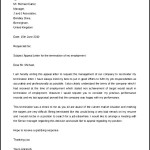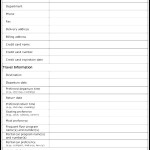Affiliate Marketing Plan Template
Here’s an HTML outline for an affiliate marketing plan template, crafted for easy understanding and practical application.
Affiliate Marketing Plan Template
This template provides a structured approach to creating an effective affiliate marketing plan. It outlines the key steps involved in launching, managing, and optimizing your affiliate campaigns for maximum profitability.
I. Executive Summary
A brief overview of your affiliate marketing goals, target audience, and key strategies. This section acts as a concise roadmap for your plan.
- Company/Website Overview: Briefly describe your business or website, including your niche, target audience, and unique selling proposition (USP).
- Goals and Objectives: Clearly define what you want to achieve with your affiliate marketing efforts. Examples include:
- Increase website traffic by X%
- Generate Y number of leads
- Drive Z in affiliate sales
- Key Strategies: Summarize the main tactics you’ll use to achieve your goals, such as content marketing, email marketing, social media promotion, or paid advertising.
II. Target Audience Analysis
Understanding your target audience is crucial for selecting relevant affiliate products and crafting effective marketing messages. This section delves into their demographics, interests, and pain points.
- Demographics: Define your target audience’s age, gender, location, income level, education, and other relevant demographic characteristics.
- Interests and Needs: Identify their interests, hobbies, and needs related to your niche. What problems are they trying to solve? What are they passionate about?
- Pain Points: Understand their frustrations and challenges. This will help you position affiliate products as solutions to their problems.
- Online Behavior: Analyze their online habits. Where do they spend their time online? Which social media platforms do they use? What websites do they visit?
- Buyer Persona: Create a detailed buyer persona representing your ideal customer. This persona should include their name, age, occupation, motivations, goals, and pain points.
III. Affiliate Program Selection
Choosing the right affiliate programs is essential for success. This section outlines the criteria for selecting profitable and relevant programs.
- Niche Relevance: Ensure the products or services offered by the affiliate program align with your website’s niche and target audience’s interests.
- Commission Structure: Evaluate the commission rates offered by different programs. Consider both the percentage commission and the average order value.
- Product Quality: Promote only high-quality products or services that you genuinely believe in. This will build trust with your audience and improve your long-term success.
- Reputation and Reliability: Research the affiliate program’s reputation and reliability. Look for reviews and testimonials from other affiliates.
- Tracking and Reporting: Ensure the program provides accurate tracking and reporting tools to monitor your performance and identify areas for improvement.
- Payment Terms: Understand the payment terms, including the minimum payout threshold and the payment methods available.
- Competitive Analysis: Analyze competitor strategies. What affiliate programs are they promoting? This can help you identify potential opportunities.
IV. Content Strategy
High-quality content is the foundation of a successful affiliate marketing strategy. This section focuses on creating valuable and engaging content that attracts and converts your target audience.
- Content Types: Determine the types of content you’ll create, such as:
- Blog posts
- Product reviews
- Tutorials and how-to guides
- Case studies
- Videos
- Infographics
- Comparison articles
- Keyword Research: Conduct keyword research to identify relevant keywords and phrases that your target audience is searching for. Use tools like Google Keyword Planner, SEMrush, or Ahrefs.
- Content Calendar: Create a content calendar to plan and schedule your content creation and publication efforts.
- SEO Optimization: Optimize your content for search engines by using relevant keywords, creating compelling meta descriptions, and building high-quality backlinks.
- Value Proposition: Ensure your content provides value to your audience by offering helpful information, solving their problems, or entertaining them.
V. Marketing and Promotion Strategy
This section outlines the strategies you’ll use to promote your content and affiliate links to your target audience.
- Email Marketing: Build an email list and send regular newsletters and promotional emails to your subscribers.
- Social Media Marketing: Promote your content and affiliate links on social media platforms relevant to your target audience.
- Paid Advertising: Consider using paid advertising platforms like Google Ads or social media ads to reach a wider audience.
- Influencer Marketing: Partner with influencers in your niche to promote your content and affiliate products.
- Community Engagement: Participate in online communities and forums related to your niche to build relationships and promote your content.
- Link Building: Build high-quality backlinks to your website to improve your search engine rankings and drive more traffic.
- Affiliate Link Placement: Strategically place affiliate links within your content in a way that is natural and unobtrusive. Disclose your affiliate relationships to maintain transparency.
VI. Budget and Resources
This section outlines the budget and resources required to implement your affiliate marketing plan.
- Content Creation Costs: Estimate the costs associated with creating content, such as hiring writers, designers, or video editors.
- Marketing and Promotion Costs: Allocate a budget for marketing and promotion activities, such as paid advertising or influencer marketing.
- Software and Tools: Identify any software or tools you’ll need, such as email marketing software, social media management tools, or keyword research tools.
- Personnel: Determine who will be responsible for implementing the different aspects of your affiliate marketing plan.
VII. Tracking and Analysis
This section focuses on tracking your performance and analyzing your results to identify areas for improvement.
- Key Performance Indicators (KPIs): Define the key metrics you’ll track to measure your success, such as:
- Website traffic
- Click-through rates (CTR)
- Conversion rates
- Earnings per click (EPC)
- Return on investment (ROI)
- Tracking Tools: Use tracking tools like Google Analytics, affiliate program tracking dashboards, or dedicated affiliate marketing platforms to monitor your performance.
- Reporting Frequency: Establish a regular reporting schedule to track your progress and identify trends.
- A/B Testing: Conduct A/B tests to optimize your content, marketing messages, and affiliate link placement.
- Data Analysis: Analyze your data to identify what’s working and what’s not. Use your findings to make adjustments to your strategy and improve your results.
VIII. Conclusion
Summarize your affiliate marketing plan and reiterate your goals and objectives. Emphasize the importance of continuous monitoring and optimization for long-term success.
IX. Appendix
Include any supporting documents, such as:
- Keyword research reports
- Buyer persona profiles
- Competitive analysis reports
- Content calendar
Affiliate Marketing Plan Template :
Affiliate Marketing Plan Template was posted in November 3, 2025 at 5:03 am. If you wanna have it as yours, please click the Pictures and you will go to click right mouse then Save Image As and Click Save and download the Affiliate Marketing Plan Template Picture.. Don’t forget to share this picture with others via Facebook, Twitter, Pinterest or other social medias! we do hope you'll get inspired by SampleTemplates123... Thanks again! If you have any DMCA issues on this post, please contact us!




